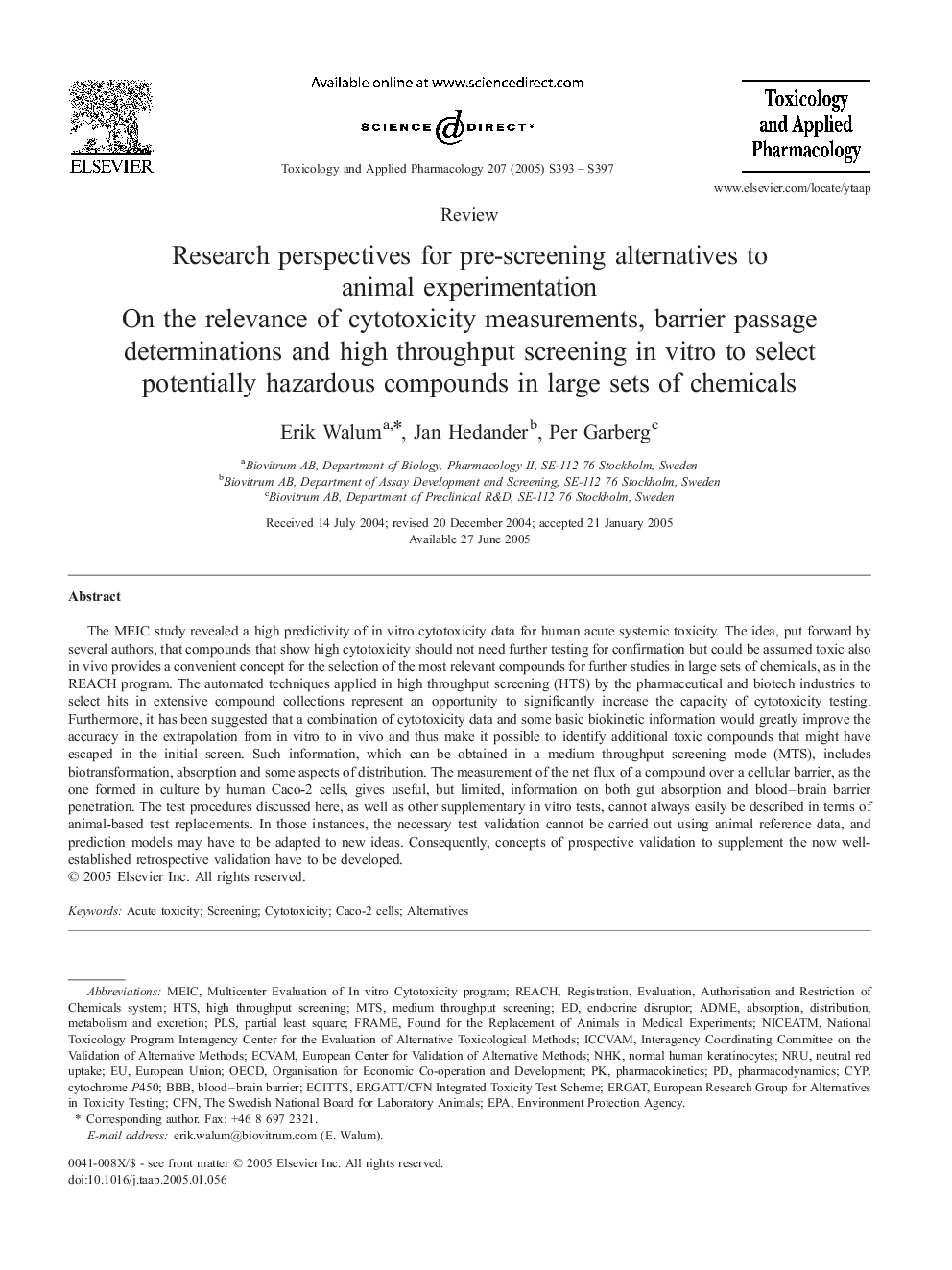| Article ID | Journal | Published Year | Pages | File Type |
|---|---|---|---|---|
| 9017769 | Toxicology and Applied Pharmacology | 2005 | 5 Pages |
Abstract
The MEIC study revealed a high predictivity of in vitro cytotoxicity data for human acute systemic toxicity. The idea, put forward by several authors, that compounds that show high cytotoxicity should not need further testing for confirmation but could be assumed toxic also in vivo provides a convenient concept for the selection of the most relevant compounds for further studies in large sets of chemicals, as in the REACH program. The automated techniques applied in high throughput screening (HTS) by the pharmaceutical and biotech industries to select hits in extensive compound collections represent an opportunity to significantly increase the capacity of cytotoxicity testing. Furthermore, it has been suggested that a combination of cytotoxicity data and some basic biokinetic information would greatly improve the accuracy in the extrapolation from in vitro to in vivo and thus make it possible to identify additional toxic compounds that might have escaped in the initial screen. Such information, which can be obtained in a medium throughput screening mode (MTS), includes biotransformation, absorption and some aspects of distribution. The measurement of the net flux of a compound over a cellular barrier, as the one formed in culture by human Caco-2 cells, gives useful, but limited, information on both gut absorption and blood-brain barrier penetration. The test procedures discussed here, as well as other supplementary in vitro tests, cannot always easily be described in terms of animal-based test replacements. In those instances, the necessary test validation cannot be carried out using animal reference data, and prediction models may have to be adapted to new ideas. Consequently, concepts of prospective validation to supplement the now well-established retrospective validation have to be developed.
Keywords
OECDMEICNICEATMNHKEnvironment Protection AgencyICCVAMECVAMcFNMTSADMECyPEPAPLSHTSNRUEuropean UnionAlternativesneutral red uptakeabsorption, distribution, metabolism and excretionpartial least squareREACHOrganisation for Economic Co-operation and DevelopmentBlood–brain barrierBBBCaco-2 cellsAcute toxicityCytotoxicityCytochrome P450Screeninghigh throughput screeningPharmacodynamicsPharmacokineticsFrameendocrine disruptornormal human keratinocytesInteragency Coordinating Committee on the Validation of Alternative Methods
Related Topics
Life Sciences
Environmental Science
Health, Toxicology and Mutagenesis
Authors
Erik Walum, Jan Hedander, Per Garberg,
